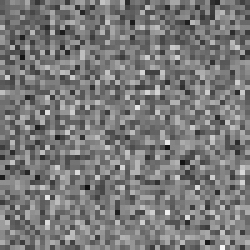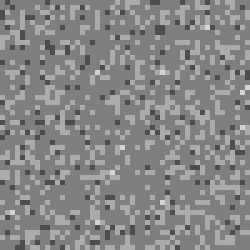Ideally each pixel in a bias frame should have exactly the same value, but this is not what we get. Each pixel is a little above or below this ideal value by some random factor. Think of it as a random error that is added to each pixel in the image, this random error is called noise.
This noise is distributed around the ideal value by what a statistics textbook calls a gaussian distribution, most values are very close to the ideal, but some are much further away. If you remember that statistics course you took back in college years ago you might recall that this distribution can be characterized by a value called "standard deviation" a measure of how far from the ideal value these random errors typically are. A smaller standard deviation is better. In the typical CCD camera a standard deviation of 20 or less should be seen, a very good camera will be less than 5. Check the specifications for the camera for what it should be. Properly interpreting this value requires knowing a number of other factors like the gain of the camera.
Your imaging software should allow you to put numbers to the noise, take a bias frame and have the software show you the statistics of the image. In a bias frame these statistics come directly from the noise.
For example, in MaxIm select View>Information Window then select Area in the popup menu at the bottom of the Information Window. The information displayed should show the maximum, minimum and average values of the pixels as well as the standard deviation. This standard deviation is a direct measure of the camera noise. Also take a look at the shape of the histogram shown in the Screen Stretch window, it should be a classic gaussian curve.
In a properly designed and operating camera this noise should be very random in nature and exhibit no sort of pattern noise.
Where does this noise come from? It comes from a number of sources. It comes from the CCD and the CCD's output amplifier, if comes from any amplifiers used to further increase the signal, and it comes from the A/D converter used to measure the signal. For the most part this type of noise is out of your control, it depends on the engineer who designed the camera and how well each camera is made. Noise is a fact of life in any instrument we can build, all we can do is minimize it.
All you can do about noise when using the camera is understand it and take it into account when you take and process your images so you can minimize it's effects. Taking many images and combining can reduce the effective noise somewhat, the more images the better, to a point.

